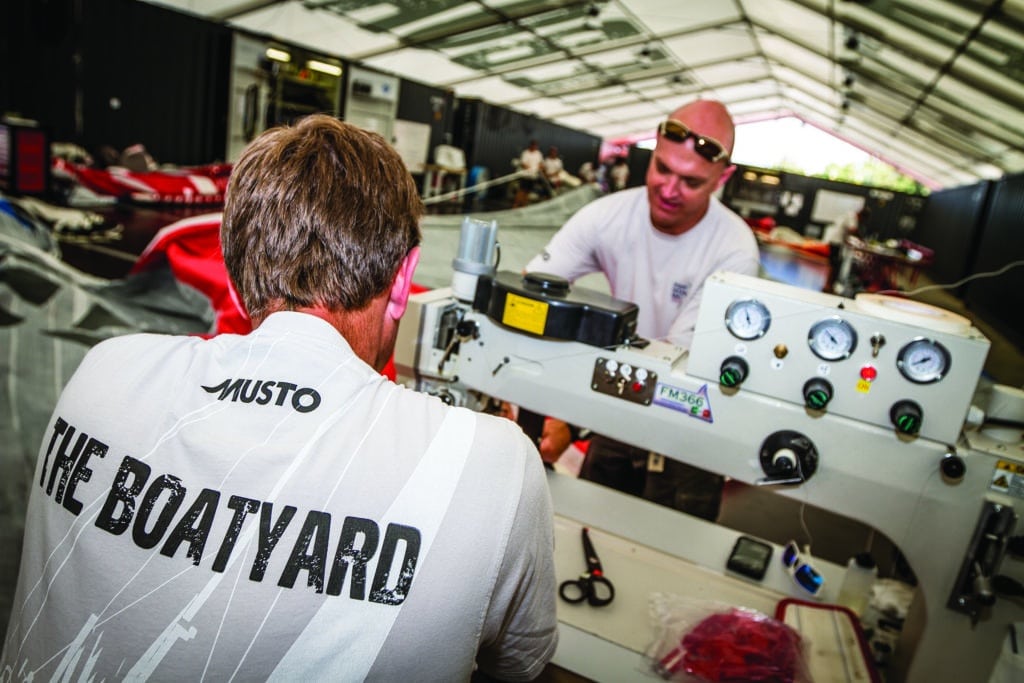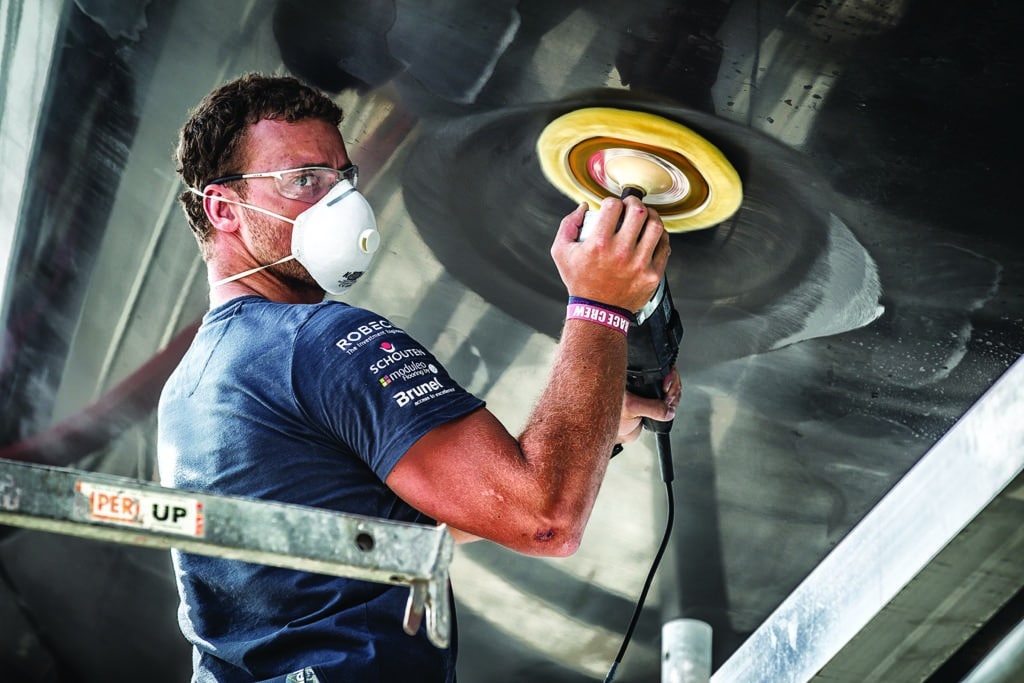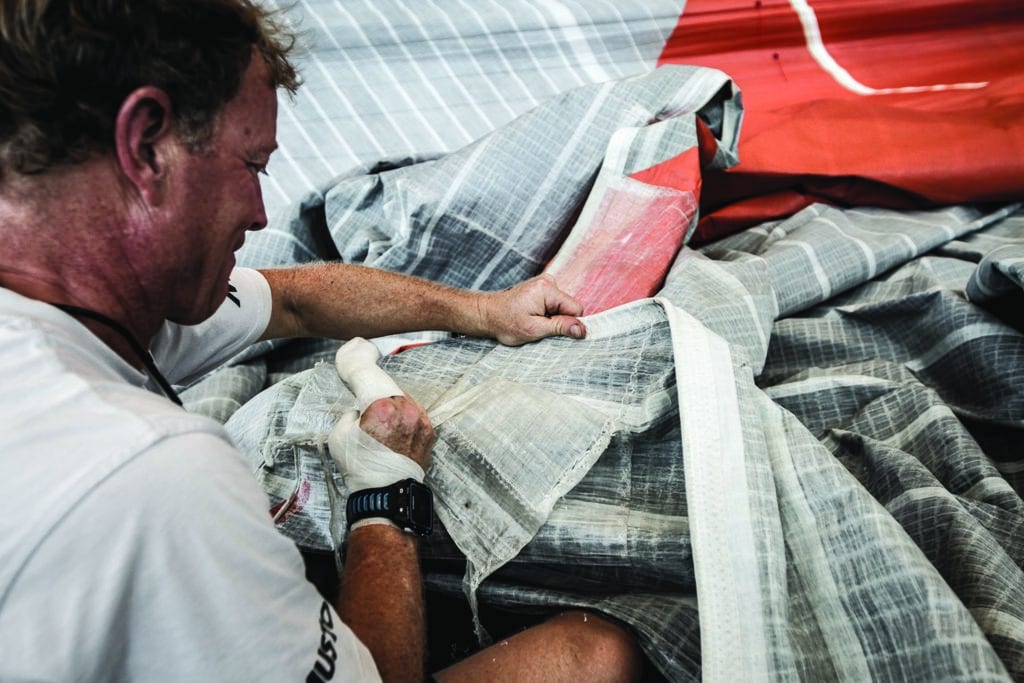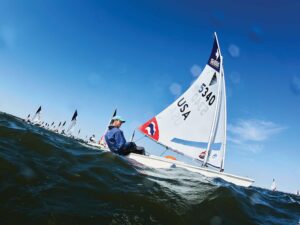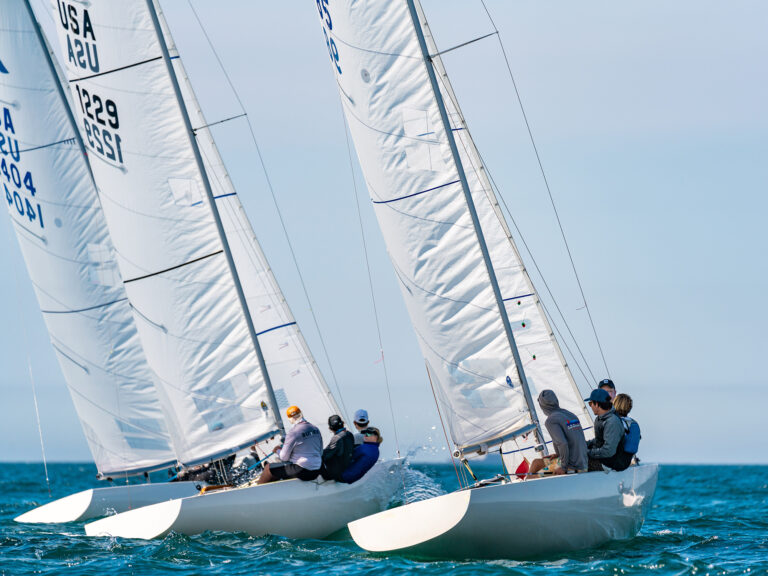Halfway through the first of two laps of which the new fleet of one-design Volvo Ocean 65s were designed to sail, there has thus far been a single dismasting. Keels have remained attached, and there are no incidences major structural failures. Compared with the previous edition of the Volvo Ocean Race, in which only three of six boats finished the first leg, it’s clear the reliability of the one-design platform has worked. Streamlining maintenance of the fleet with a shared “Boat Yard” servicing in the stopovers has helped, but hat’s not to say the fleet has enjoyed an entirely clean bill of health since the start.
The first common failures were deck-mounted pad eyes. On Leg 1, Dongfeng Race Team had the first pad eye casualty, which resulted in a highly loaded and flogging headsail sheet wreaking havoc on deck fittings and structures, destroying a stanchion and ripping off half of a carbon steering wheel. When the fleet pulled into Cape Town, the Boat Yard replaced all of the pad eyes on every boat and took the old ones home to be re-engineered with the help of Spinlock engineers. When the fleet reached Abu Dhabi at the end of Leg 2, newer, stronger pad eyes were installed had yet to see a failure by the conclusion of Leg 5. To maintain the integrity of the one-design aspect of this race, when one boat is modified, all boats are modified.
“When the boats were designed, we looked for relatively inexpensive ways to gain performance,” says Boat Yard manager Nick Bice. “Outriggers have been proven on IMOCA 60s for years as a cheap way to find some speed, so we added them to the new VO65s.”
Unfortunately, it’s not possible to build something completely indestructible and when the teams push the boat hard, gear is bound to break, and break it has.
“When the outrigger gets tweaked down, the leech profile of the big Code Zero gennaker improves and the boat goes faster,” Bice explains. “The loads also increase exponentially and you begin to run the risk of breaking.”
After two teams suffered out-rigger pad eye failures, the Boat Yard crew re-engineered the system to include two pad eyes instead of one, in an effort to better distribute the load. The pad eyes aren’t failing any more, and now the weakest part of the system is the outrigger itself.
“The team’s have been given guidelines on how hard they can push the outrigger before it breaks,” says Bice. “It comes down to risk management and how hard they want to push.”
With three-week legs in this race being decided by mere minutes, every tenth of a knot becomes critical, and it’s no secret that sail area equals speed in a high righting-moment platform like a VO65. VOR sail loft manager Nathan Quirk explains, the challenges his team has experience thus far.
“The biggest thing that we’ve learned is that the sailors are pushing the sails much higher in the wind range than we expected before the start,” says Quirk. “We expected the Code Zeros to fly in two to ten knots upwind, and we’ve heard reports of them being used to sixteen knots upwind. The sails held up, but pad eyes started blowing up. The jibs were suffering earlier than expected when they were being carried so high up-range, but after some leech repairs things have become much more predictable.”
Like the rest of the boat, the sails were built with the strongest materials possible and designed more for reliability than outright speed. Sail preservation is paramount as teams are only allowed to replace four sails during the entirety of the nearly 39,000-mile circumnavigation.
A dismasting is the one thing every racing sailor fears most when pushing hard in extreme conditions, and until Donfeng’s dismasting hours before rounding Cape Horn, the fleet’s rigs were trouble-free. The primary rig-related issues have been inoperable halyard locks and externally mounted mast tracks pulling away from the rig. On Leg 4 from Sanya, China, to Auckland, three J1 halyard-lock bullets failed in high-wind reaching conditions, once again sending Bice and his team into action. Working with its supplier, Southern Spars, the part was re-engineered and by the time that the fleet reached Auckland, stronger lock bullets (the metal fitting that is spliced into the halyard and gets locked aloft when the sail is hoisted) were installed across the fleet.
The Boat Yard’s shared maintenance program, which puts each boat through a streamlined and efficient maintenance schedule, has been a major boon for the race, allowing the sailors to rest during stopovers and ensuring each boat is race ready. During select race stops, the rigs are pulled and boats are hauled before servicing individual systems. Masts and booms are stripped to bare carbon tubes before undergoing ultra-sounding and close inspections.
Southern Spars EC6 shrouds are replaced and then inspected at or before 35,000 miles while non-composite parts are die-tested for signs of fatigue and cracking.
Deck hardware, winches, and grinding pedestals are inspected and serviced at intervals while an army of boat builders and electricians tear apart the inside to look for damage, service hydraulics, and repair faulty electrical connections. Hulls are buffed and foils are wet-sanded to perfection so each crew can start each leg with equal confidence in the speed, reliability, and level of preparation in their boat. Only then, does it come down to the collective skills of the sailors.
